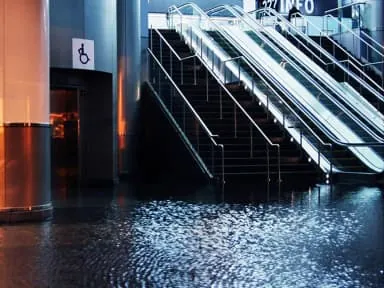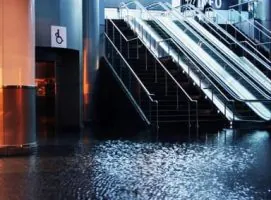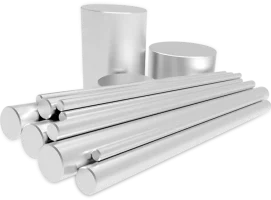How Do Professionals Handle Flooded Homes or Businesses?
When a property experiences a flood, the damage can be overwhelming. Whether it’s due to heavy rainfall, a burst pipe, or a natural disaster, quick action is critical to prevent long-term structural issues and health hazards. This is where emergency water damage restoration professionals come in. They have the expertise, advanced tools, and systematic procedures to restore flooded homes or businesses efficiently and safely. Companies like Ideal Response specialize in managing these crises, ensuring that every step—from initial assessment to complete restoration—is handled with precision.
What Happens First in an Emergency Flooding Situation?
When professionals arrive at a flooding basement or any other water-damaged property, their first step is to perform a thorough inspection. This involves identifying the source of the flooding, assessing the extent of the damage, and determining the level of contamination in the water.
Floodwater is categorized into three types:
- Clean water – from broken pipes or rainwater.
- Gray water – from appliances or sinks that contain mild contaminants.
- Black water – from sewage backups or outdoor flooding, which contains harmful bacteria and toxins.
This initial inspection allows restoration experts to create a customized emergency water damage restoration plan, ensuring that safety and efficiency remain the top priorities throughout the process.
How Do Experts Ensure Safety Before Starting Work?
Safety is always the first concern when handling a flooding basement or a water-logged commercial space. Before beginning restoration, professionals ensure the electricity and gas supply to the affected areas are turned off to prevent electrocution or fire hazards.
Additionally, technicians wear protective gear such as waterproof suits, gloves, boots, and respirators, especially when dealing with contaminated water. They also isolate the affected area to stop mold spores or bacteria from spreading to unaffected parts of the building.
A reputable company like Ideal Response always prioritizes the safety of both its workers and property owners, adhering to health and safety guidelines set by environmental and public health agencies.
What Tools and Techniques Are Used for Water Extraction?
Once the site is secured, professionals begin the most critical phase of emergency water damage restoration—water extraction. Specialized equipment such as industrial-grade pumps, wet vacuums, and suction tools are used to remove standing water quickly.
For properties with a flooding basement, submersible pumps are typically used to remove large volumes of water efficiently. The faster the water is removed, the lower the chances of structural damage, mold growth, and secondary issues such as warped flooring or damaged walls.
Professionals also monitor moisture levels using advanced meters to ensure that all hidden pockets of water within walls, ceilings, or floors are detected and addressed.
How Do Professionals Dry and Dehumidify the Area?
After the bulk of the water is removed, the drying and dehumidification process begins. Simply wiping or mopping the surface is not enough—moisture can remain trapped in materials and continue to cause damage.
Restoration experts use high-speed air movers and powerful dehumidifiers to eliminate lingering moisture. These machines help maintain optimal humidity levels, ensuring that all surfaces, including concrete, wood, and drywall, are completely dry.
For basements or large commercial areas, continuous monitoring is done using hygrometers and infrared cameras to verify that no hidden damp spots remain. This step is crucial in preventing future mold growth and structural deterioration.
What Role Does Cleaning and Sanitization Play in Restoration?
After drying, cleaning and sanitization become the next priority. Floodwater often carries dirt, debris, bacteria, and even chemical contaminants. Professionals use industrial-grade disinfectants and antimicrobial treatments to eliminate any harmful pathogens.
All affected surfaces, including walls, floors, and furniture, are cleaned thoroughly. In cases of flooding basement contamination, special attention is given to ensuring that no traces of sewage or mold spores remain.
Additionally, air scrubbers equipped with HEPA filters are used to purify the air, reducing airborne particles that could trigger respiratory problems.
This deep cleaning step ensures the property is not only structurally sound but also safe and healthy for occupants to return.
How Is Mold Growth Prevented After Flooding?
One of the biggest concerns following any water-related disaster is mold. Mold can begin to grow within 24–48 hours of flooding if the area remains damp.
To prevent this, emergency water damage restoration experts take proactive steps such as:
- Applying mold inhibitors and antimicrobial solutions to affected areas.
- Ensuring all structural components are completely dry.
- Performing air quality tests to detect any hidden mold spores.
If mold is already present, professionals carry out specialized remediation procedures to remove it safely and prevent future outbreaks. Addressing mold quickly protects both the property’s value and the health of those who live or work there.
How Do Restoration Experts Handle Structural Repairs?
Once cleaning and sanitization are complete, professionals assess structural damage. Floodwater can weaken foundations, compromise drywall, and damage electrical systems.
Restoration teams repair or replace affected materials such as drywall, insulation, flooring, and ceiling panels. For businesses, this may also include restoring office furniture, shelving, or inventory areas.
In severe cases, carpentry, electrical, and plumbing work may be required to bring the property back to pre-flood condition. Companies like Ideal Response manage these repairs seamlessly, ensuring minimal disruption to daily life or business operations.
Why Is Professional Documentation Important for Insurance Claims?
Documenting flood damage properly is vital when filing insurance claims. Restoration professionals take photographs, record videos, and maintain detailed logs of the entire restoration process.
This documentation helps homeowners and business owners substantiate their claims, ensuring fair compensation for the loss. Many emergency water damage restoration companies also work directly with insurance providers to speed up the approval and reimbursement process.
What Are the Long-Term Benefits of Professional Restoration?
Hiring professionals for flooding basement or large-scale water damage cleanup offers several long-term advantages:
- Prevention of structural decay: Proper drying prevents wood rot and corrosion.
- Improved air quality: Advanced filtration and sanitization eliminate pollutants.
- Reduced health risks: Mold and bacteria are eradicated effectively.
- Faster recovery: Professionals help restore your property more quickly, reducing downtime.
Moreover, expert restoration extends the lifespan of your property, preventing future water-related problems that could be costly to fix later.
When Should You Call for Professional Help?
If your home or business experiences flooding—no matter how minor it appears—immediate professional intervention is crucial. Delaying can lead to extensive damage, mold infestations, and expensive repairs down the line.
A trusted service provider like Ideal Response offers 24/7 emergency water damage restoration for both residential and commercial properties. Their prompt response, skilled technicians, and advanced technology ensure that your property is restored to a clean, dry, and safe state as quickly as possible.
Conclusion: Why Trust Professionals with Flood Restoration?
Handling a flooding basement or a water-damaged building is not a DIY task—it requires professional expertise, precision, and the right equipment. Certified restoration experts follow a proven process that includes inspection, water removal, drying, cleaning, sanitization, and repairs.
By choosing a professional company like Ideal Response, you ensure that your property receives the care it needs to recover fully. From safeguarding structural integrity to maintaining indoor air quality, professional emergency water damage restoration is the most effective way to protect your investment and restore normalcy after disaster strikes.














